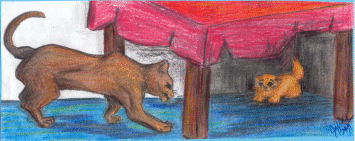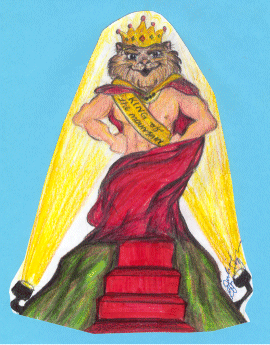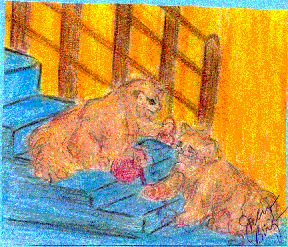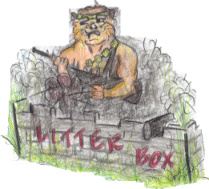Mousekateers
Articles
|
|
Types of Feline Aggression
|
Territorial
Aggression
|
||||
|
|

|

|
Cats, especially cattery cats, have a well defined social hierarchy. Stud cats are at the top of that hierarchy, but an aggressive queen may attack a tom cat if she does not want to be bothered. He usually retreats and leaves her alone. A challanging male would not be pardoned as easily. Among the females, queens usually have a higher status than that of spayed females. Older queens that have been raised with young adolescent females are dominant over them. Social hierarchy is easily studied in catteries by simply placing a platefull of cooked, chopped chicken among the cats and simply observing who gets to eat first! |

|
Generally, stud cats in catteries are caged and not allowed to come in contact with one another because they will fight. They are fighting for dominance and the right to breed with the females. They are also not allowed to interact freely among the females because matings are carefully planned so that top show cats can be produced. |

|
When littermates play, they learn a valuable lesson that they carry on into adulthood. They learn through play to inhibit their bites and to sheathe their claws. They experience how it feels to be bitten or scratched by a littermate during play, and learn how to modulate their responses. |
| What does an aggressive cat look and sound like? |
|
|
Angela Bassett Benny Billi Cameron Diaz Chipmunk Christina Ricci Halle Berry Honey Jennifer Lopez Lassie Cheyenne Laurel Lindsay Lohen Peggy Sue Reba McIntire Tyra Banks Vanessa Williams 
Wooly Bully |

Want to listen to some music? Just point and click. It takes a second to load, so please be patient. Music
|


